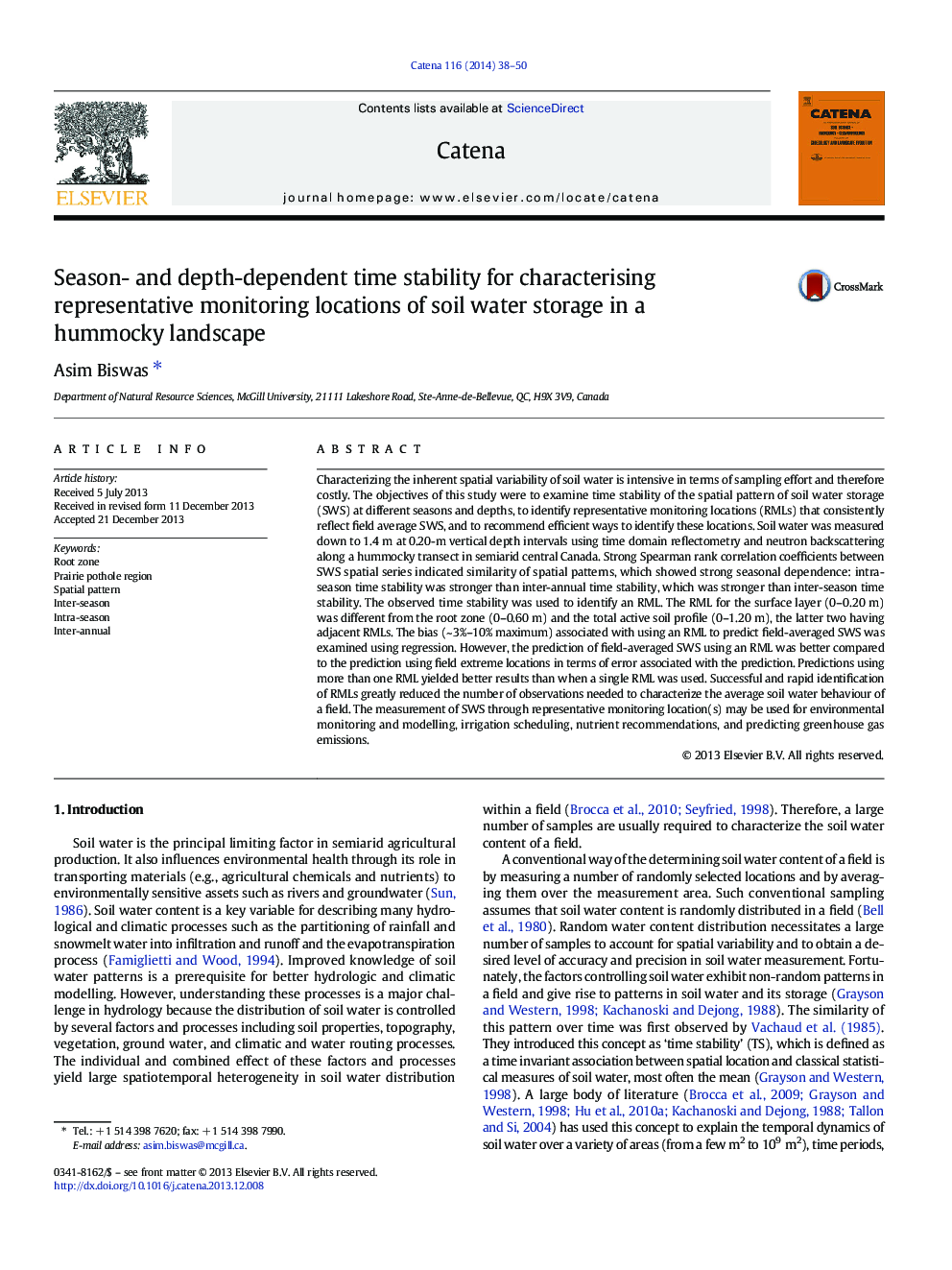| کد مقاله | کد نشریه | سال انتشار | مقاله انگلیسی | نسخه تمام متن |
|---|---|---|---|---|
| 4571466 | 1629236 | 2014 | 13 صفحه PDF | دانلود رایگان |
• Similarities in the spatial patterns were examined over time and at various depths.
• Similarities in the spatial patterns were depth dependent.
• Persistent spatial patterns indicated consistent underlying hydrological controls.
• The locations that store about field-averaged soil water were identified at depths.
• The performance of a single and multiple representative points was examined.
Characterizing the inherent spatial variability of soil water is intensive in terms of sampling effort and therefore costly. The objectives of this study were to examine time stability of the spatial pattern of soil water storage (SWS) at different seasons and depths, to identify representative monitoring locations (RMLs) that consistently reflect field average SWS, and to recommend efficient ways to identify these locations. Soil water was measured down to 1.4 m at 0.20-m vertical depth intervals using time domain reflectometry and neutron backscattering along a hummocky transect in semiarid central Canada. Strong Spearman rank correlation coefficients between SWS spatial series indicated similarity of spatial patterns, which showed strong seasonal dependence: intra-season time stability was stronger than inter-annual time stability, which was stronger than inter-season time stability. The observed time stability was used to identify an RML. The RML for the surface layer (0–0.20 m) was different from the root zone (0–0.60 m) and the total active soil profile (0–1.20 m), the latter two having adjacent RMLs. The bias (~ 3%–10% maximum) associated with using an RML to predict field-averaged SWS was examined using regression. However, the prediction of field-averaged SWS using an RML was better compared to the prediction using field extreme locations in terms of error associated with the prediction. Predictions using more than one RML yielded better results than when a single RML was used. Successful and rapid identification of RMLs greatly reduced the number of observations needed to characterize the average soil water behaviour of a field. The measurement of SWS through representative monitoring location(s) may be used for environmental monitoring and modelling, irrigation scheduling, nutrient recommendations, and predicting greenhouse gas emissions.
Journal: CATENA - Volume 116, May 2014, Pages 38–50
